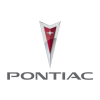
Pontiac Solstice

Photos
No content available
Reviews and News
There are no reviews and news for Pontiac Solstice
Owner Scores
Comfort
N/A
Performance
N/A
Fuel Economy
N/A
Interior Design
N/A
Exterior Styling
N/A
Reliability
N/A
Owner Reviews
lewisporte123
smooth and excellent handling
March 24, 2016
Overall Score
loved it from day 1... only used during summer months and stored during the winter.. no issues with ride or performance..
Comfort
8
Performance
10
Fuel Economy
8
Interior Design
8
Exterior Styling
10
Reliability
8
Recall Information
* Data provided by Transport Canada
Recall number
Recall date
System affected
Model year(s) affected
Recall number
2017-044
Recall date
2017-01-27
System affected
Airbag
Model year(s) affected
2006 2007 2008 2009 2010
Manufacturer Recall Number:
17036
Units Affected:
7,143
Notification Type:
Safety TC
On certain vehicles, over time, the flexible sensor mat of passenger airbag suppression system (PPS) within the passenger seat can bend and become damaged. If this were to occur, the damage can potentially cause the PPS module to suppress the front passenger airbag during a crash. If fault exists in the PPS system and the vehicle is involved in a crash where airbag deployment is warranted, the front passenger airbag may not deploy, which if an adult is occupying the passenger seat, could increase the risk of injury to the occupant. Correction: Dealers will inspect the PPS sensor mat for damage and add a reinforcement strip to the sensor mat if no damage is found. If damage is found, the PPS sensor mat will be replaced and reinforcement strips added. Note: If an active fault exists in the PPS system, the airbag malfunction-indicator lamp will illuminate and the passenger airbag telltale will indicate that the airbag is off. Additionally, the driver information center will display a “Service Airbag” message, and the audio system will play an audible warning chime.
Recall number
2014-126
Recall date
2014-04-10
System affected
Other
Model year(s) affected
2006 2007 2008 2009 2010
Manufacturer Recall Number:
14113
Units Affected:
367,972
Notification Type:
Safety Mfr
On certain vehicles, a defect may allow the ignition key to be removed from the ignition switch when the key is not in the "Off" position. This could result in unintended vehicle movement if the transmission is not in the "park" position (automatic transmission) or not in the reverse gear with the parking brake engaged (manual transmission), and increase the risk of a crash causing injury and/or property damage. Correction: Dealers will replace the ignition lock cylinder and/or ignition key.
Recall number
2014-101
Recall date
2014-03-31
System affected
Other
Model year(s) affected
2008 2009 2010
Manufacturer Recall Number:
14092
Units Affected:
132,243
Notification Type:
Safety Mfr
A safety defect may exist in ignition switches sold as service replacement parts. The defect could allow the ignition switch to unintentionally move from the “run” position to the “accessory” or “off” position with a corresponding reduction or loss of power. This risk may be increased if the key ring is carrying added weight or the vehicle goes off road or experiences some other jarring event. The timing of the key movement out of the “run” position, relative to the activation of the sensing algorithm of the crash event, may result in the airbags not deploying, increasing the potential for occupant injury in certain kinds of crashes. General Motors Canada will notify owners of all vehicles not affected by recalls 2014038 (GM number 13454) and 2014060 (GM number 14063) that could potentially have had the affected ignition switches installed during service or repair work. Owners will be instructed to take their vehicle to a dealer for inspection and repair if required. Note: Until the inspection is performed, all items should be removed from the key ring.
Recall number
2014-060
Recall date
2014-02-26
System affected
Electrical
Model year(s) affected
2006 2007
Manufacturer Recall Number:
14063
Units Affected:
82,514
Notification Type:
Safety Mfr
On certain vehicles, a defect in the ignition switch could allow the switch to move out of the "run" position if the key ring is carrying added weight and the vehicle goes off-road or is subjected to some other jarring event. The timing of the key movement out of the “run” position, relative to the activation of the sensing algorithm of the crash event, may result in the airbags not deploying, increasing the risk of injury. Correction: Dealers will replace the ignition switch. Note: Until the correction is performed, all items should be removed from the key ring. Note: This is an expansion of recall 2014-038.
Recall number
2007-417
Recall date
2007-12-19
System affected
Powertrain
Model year(s) affected
2006 2007
Manufacturer Recall Number:
07204
Units Affected:
20,052
Notification Type:
Safety Mfr
On certain vehicles, the drive axle differential seal may leak (note that all-wheel drive vehicles have two seals). Reduced lubrication may cause the differential to become noisier. Continued use may cause damage to bearings and other differential components. Three conditions could occur: 1). When the vehicle is stopped and shifted to reverse, the differential may jam and prevent vehicle movement. 2). the damage can cause drag that will feel like the parking brake is applied; or 3) the differential could jam and lock the drive wheels while the vehicle is underway. Should the latter occur, it could result in a loss of vehicle control and a crash, causing injury or death. Correction: Dealers will replace the drive axle differential seal(s).
Recall number
2007-312
Recall date
2007-09-26
System affected
Seats And Restraints
Model year(s) affected
2008
Manufacturer Recall Number:
07263
Units Affected:
33
Notification Type:
Safety Mfr
On certain vehicles, the inboard seat stud fasteners may fail to comply with strength requirements of CMVSS 207 - Anchorage of Seats, and CMVSS 210 - Seatbelt Assembly Anchorages. In the event of a crash, the seat and seatbelt assembly may not restrain the occupant as intended and could result in injury to the occupant. Correction: Dealers will inspect the inboard seat studs, and if necessary, remove the stud and install a bolt.
Select Another Vehicle

